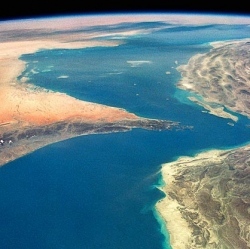
This future mission, which won’t launch until the 2030s, will seek answers to two profound questions. One: whether or not we’re alone in the universe. Two: how the building blocks of our universe have evolved over cosmic time. It’s a short, sweet, and insanely ambitious agenda.
To achieve it, we’ll need a spacecraft more advanced than anything humans have ever built, a telescope with ten times the seeing power of Hubble. As one astronomer put it, we’re talking about Hubble HD.
“The road to [discovering] living worlds requires an eight to 12 meter space-based telescope,” said Natalie Batalha, an astronomer who studies exoplanets at NASA’s Ames Research Center.
“This is what can consistently survey Sun-like stars within 30 parsecs.” As Batalha explained, 30 parsecs (nearly 100 light years), is the radial distance we need to cover in order to survey several dozen Earth-sized planets in the habitable zone of Sun-like stars.
If there’s life out there, and if we can profile a decent number of candidate worlds, we’ll have a reasonable shot at finding it.
Putting an eight to 12 metre (26 to 40 foot) telescope into space will be a tremendous undertaking. For comparison, the James Webb Space Telescope, an 8.7 billion dollar, tennis-court sized device that’ll allow astronomers to see the first light from the beginning of the universe, has a 6.5 metre (21 foot) primary mirror. JWST is scrawny compared to the beast of a stargazer astronomers want to build in the 2030s.
To glimpse small, rocky planets in the habitable zone of bright, G-type stars (stars like our Sun), and to study their atmospheres for signs of life, we need a telescope with an enormous aperture. A telescope that can suppress starlight by a factor of ten billion. And it has be in space, beyond the obscuring haze of our atmosphere.
But JWST’s successor won’t just be searching for life. It’ll also help us learn how the building blocks of matter evolved over cosmic time, in a sense, probing an even more fundamental question about where life comes from. “If we want to go from the Big Bang to bio-signatures, you need to understand the evolution of atoms in the universe,” said John O’Meara of Saint Michael’s College.
